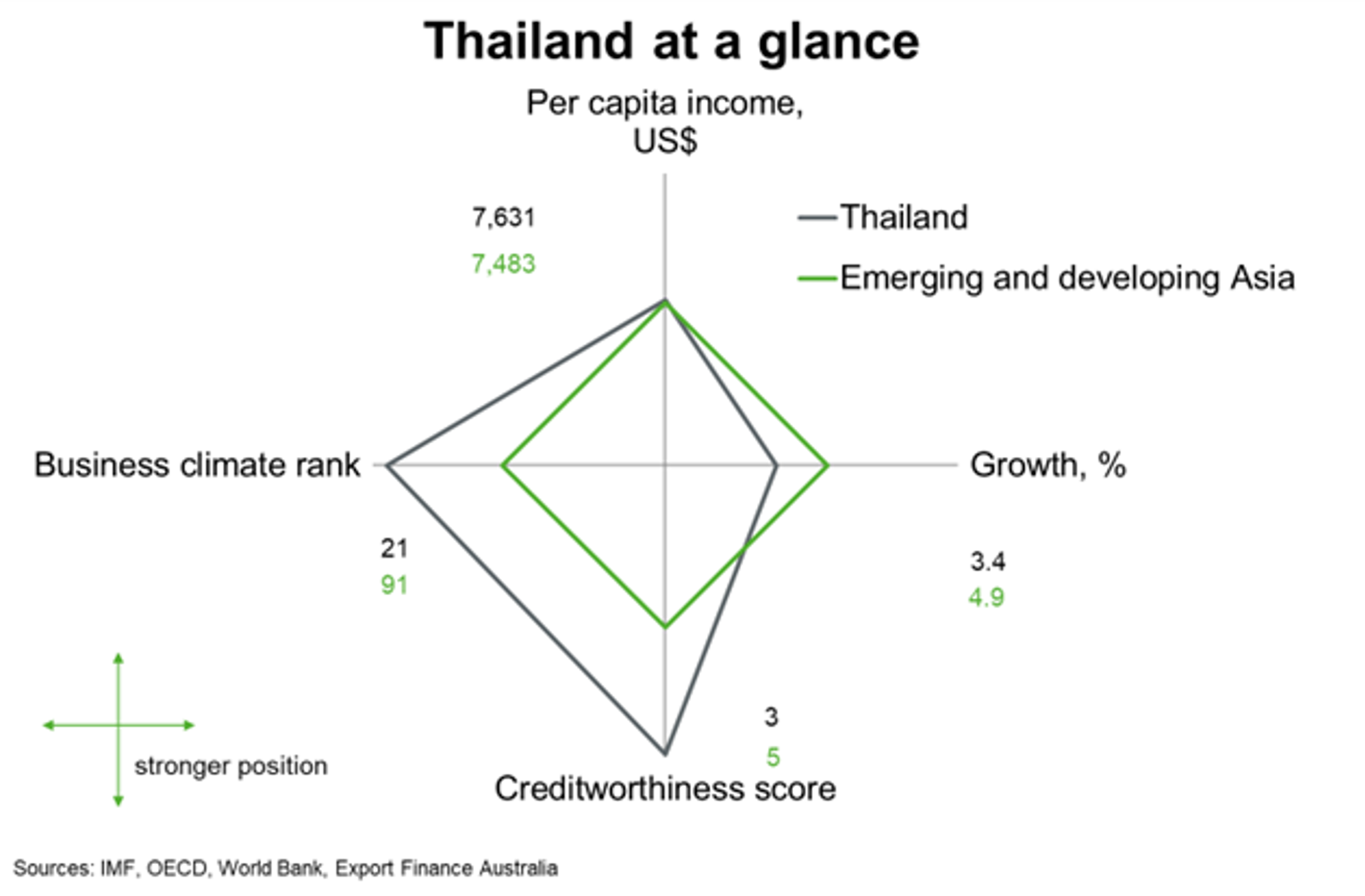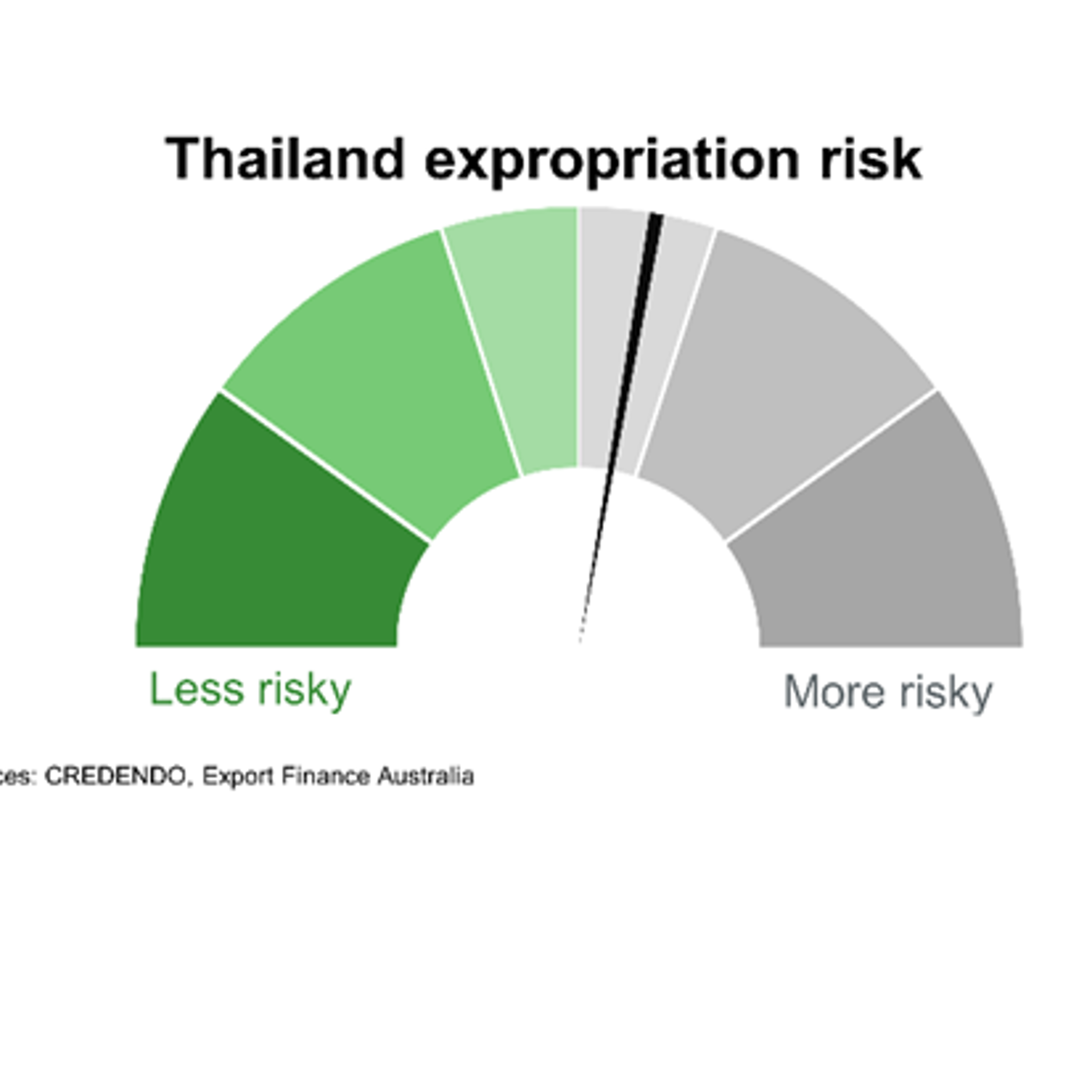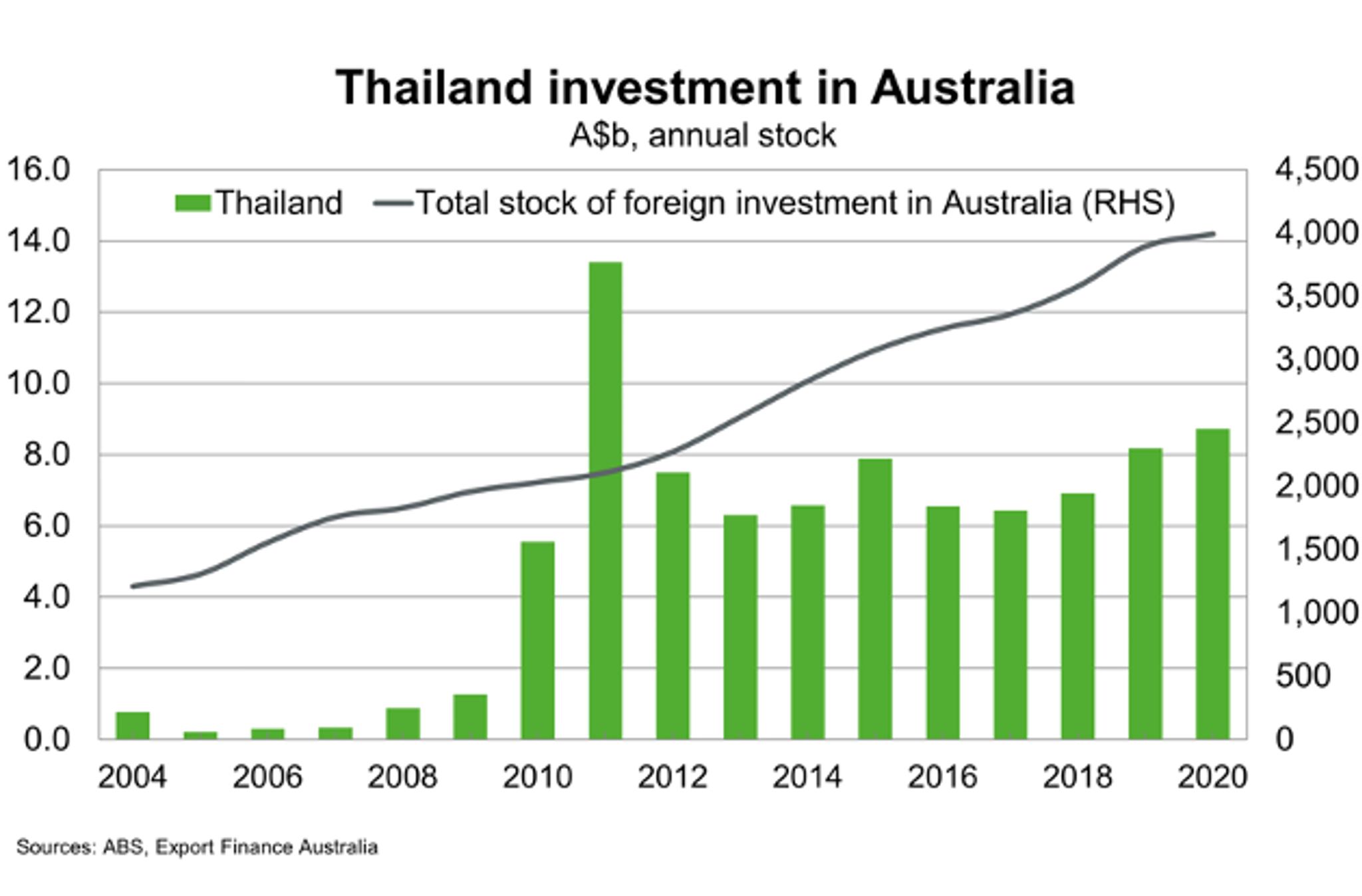
Thailand
Thailand
Last updated: January 2023
Thailand outperforms most of emerging and developing Asia on measures of creditworthiness and the business climate. Per capita income and GDP growth lags. Longer-term structural challenges related to an ageing society and labour skills shortages, alongside political risks, weigh on Thailand’s growth potential relative to emerging Asian peers. Reopening of international borders around the world will support recovery in Thailand’s large tourism industry.

The above chart is a cobweb diagram showing how a country measures up on four important dimensions of economic performance—per capita income, annual GDP growth, business climate rank and creditworthiness. Per capita income is in current US dollars. Annual GDP growth is the five-year average forecast between 2023 and 2027. Business climate is measured by the World Bank’s 2019 Ease of Doing Business ranking of 190 countries. Creditworthiness attempts to measure a country's ability to honour its external debt obligations and is measured by its OECD country credit risk rating. The chart shows not only how a country performs on the four dimensions, but how it measures up against other countries in the region.
Economic outlook
Thailand’s economic recovery has lagged that of other Southeast Asian nations, as the crucial tourism sector is just starting to pick up following the global pandemic-induced slump. An increase in private consumption and gradual tourism recovery supported economic growth in 2022. However, negative spillovers from the war in Ukraine and lockdowns in China highlighted Thailand’s reliance on oil and vulnerability to supply chain disruptions.
The IMF expects growth to pick up to 3.7% in 2023, from 2.8% in 2022, on the back of recovering investment and higher private consumption. Thailand’s large tourism sector, which contributed 13% of GDP in 2019, will benefit significantly from China’s recent border reopening. Before the pandemic, Chinese tourists made up 28% of all Thai tourist arrivals in 2019. Rising Chinese tourism will support employment and wages in Thailand’s services sector, in turn helping to boost domestic demand.
Risks to growth include the potential for even higher cost-of-living pressures and more interest rate hikes squeezing household budgets. A sharper than expected global slowdown would hit exports hard. A rapid recovery in tourism could also add to supply constraints, such as labour shortages and wage pressures, that limit the economic expansion.
Thailand’s 20-Year National Strategy (2017-2036) will continue to underpin the government’s strategy to lift growth over the longer term. A cornerstone of this initiative is the ongoing implementation of projects in the flagship US$50 billion Eastern Economic Corridor (about 10% of GDP), which should support a pick-up in private and public investment. Greater infrastructure development should aid foreign investment and enhance the international competitiveness of high-potential growth industries, including next-generation automobiles and artificial intelligence. But an ageing society, moderate competitiveness and labour skills shortages, if left unaddressed, will weigh on economic growth potential over time. The potential for political tensions and protests remain ongoing risks to business confidence, foreign investment and the broader economic recovery ahead of and beyond the 2023 general election.

The IMF estimates GDP per capita of around US$7,500 in 2022, and expects incomes to reach about US$10,500 by 2027. Although poverty and unemployment declined in 2022, incomes have fallen and household debt has increased to meet expenditure needs as the cost of living rises. Authorities’ plans to raise investment in infrastructure, education and training, if effectively implemented, can help Thailand expand production in higher value-added industries and lift productivity and household incomes.

Country Risk
Country risk in Thailand is low to moderate. The OECD has a country credit grade of 3; comparable with the Philippines, India and Indonesia. This indicates a relatively low to moderate likelihood that Thailand will be unable and/or unwilling to meet its external debt obligations.


Risk of expropriation in Thailand is moderate to high. According to the US investment climate statements, Thai laws provide guarantees regarding protection from expropriation without compensation and non-discrimination for some, but not all, investors. Thailand allows the government to carry out expropriation for the purpose of promoting public interest, with reasonable compensation being offered to the expropriated private party.

Political risk is moderate. Political uncertainty is high in the lead up to the 2023 general election, given discord in the ruling coalition and lingering tensions between the government and opposition parties. Protests can flare from time to time. There remains some risk that domestic political stress and civil unrest could impinge on the effectiveness of policymaking, foreign investment and economic recovery. Risk of political violence remains prominent because of Thailand’s long history of military coups.

Governance indicators are broadly stronger than most other emerging Asian economies, except for political stability/absence of violence and voice and accountability. Thailand has a demonstrated track record of transparent and predictable fiscal and monetary policies that have maintained economic and financial stability through political cycles.

Bilateral Relations
Thailand was Australia’s 11th largest trading partner in 2021, making up 2.5% of Australia’s total trade. More than 3,000 Australian businesses export to Thailand and around 200 have an on the ground presence.
Exports of goods amounted to $7 billion in 2021, up from about $4.7 billion in 2020, consisting mostly of gold, coal, natural gas and aluminium. Australian agriculture and consumer-oriented exporters could benefit from the strong growth in Thailand’s e-commerce market and fast-growing retail food sector. For instance, Thai demand for premium Australian food products across all major categories including gourmet and artisan foods, healthy and lifestyle foods is on the rise. Thailand’s plans to develop railways, roads and port infrastructure also offer opportunities for Australian exporters of energy, transport, telecommunications and mining services and equipment.
Goods imports from Thailand have remained above $14 billion every year since 2016. Goods imports are dominated by goods vehicles, passenger motor vehicles, heating and cooling equipment and household equipment. Imports of services from Thailand are small.

Thailand is Australia’s sixth largest source of student enrolments as of October 2022, and should continue to be an important market for international students in Australia. Thailand’s plan to raise education outcomes and upskill its labour force opens up opportunities for Australian education, training, upskilling and reskilling programs. An estimated 24 million workers are expected to enter the Thai workforce over the next 15 years. Meanwhile, another year of open international borders and pent-up demand for travel should support further recovery in Thai tourism to Australia, and broader services exports, in 2023; Thailand is Australia’s 17th largest source of tourism arrivals as of October 2022.


Thai investment in Australia is quite small but has been growing at a steady rate over the past decade across many areas, including energy and resources, tourism infrastructure and agribusiness.

Australian investment in Thailand has also grown, largely in the automotive, logistics, advanced manufacturing, technology and services industries.

Useful Links
Department of Foreign Affairs and Trade
Thailand Australia Free trade agreement
Austrade
